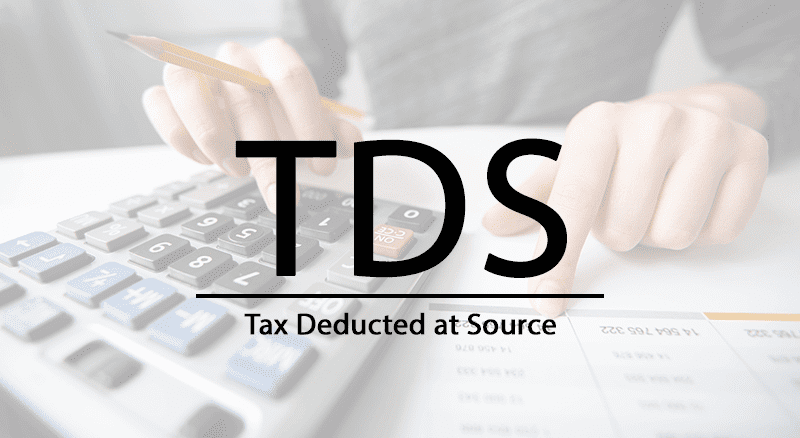Introduction:
Tax Deducted at Source, commonly known as TDS. It is a crucial component of the Indian taxation system. Designed to streamline the process of tax collection, TDS ensures that taxes are deducted at the source of income, eliminating the need for taxpayers to pay the entire tax amount in a lump sum at the end of the financial year. In this article, we will break down the concept of TDS in simple terms, providing real-life examples to make the understanding even more straightforward.

Note: Refer to the latest tax rules. Below is a simple overview of TDS.
What is TDS ?
Tax Deducted at Source, as the name suggests, involves deducting a certain percentage of tax at the time of generating income. This deducted amount is then remitted to the government, and the individual or entity receiving the income gets the remaining amount. TDS is applicable to various types of incomes, such as salary, interest, rent, and more.
For simple understanding we can say that tax deducted at the prescribed rate by the employer (Payer) from the employee (Payee) at the time of payout (salary disbursement) and deposit the tax amount to the Government of India (GOI).
Example : TDS on Salary
Consider the scenario where Rahul is employed and earns a monthly salary of Rs. 50,000. His employer is obligated to deduct a certain percentage of tax from his salary before paying him. Let’s assume the TDS rate is 10%. In this case, Rahul will receive Rs. 45,000 (Rs. 50,000 – 10% TDS), and the remaining Rs. 5,000 will be deposited as TDS to the government on his behalf.
Here, the employer is liable to determine and deduct the tax timely and pay the tax to the GOI. The tax deduction is done every month from the employee’s salary. As per the latest income tax regulations, the employer or the deductor should pay the Tax to the government by the 7th day of the next month.
Example : TDS on Interest Income
Suppose Neha has invested in fixed deposits and earns interest income of Rs. 10,000 from a bank. The bank, before crediting the interest to Neha’s account, deducts TDS at a prescribed rate, say 5%. In this case, Neha will receive Rs. 9,500 (Rs. 10,000 – 5% TDS), and the bank will deposit Rs. 500 as TDS to the government.
TDS Rates and Thresholds
It’s essential to be aware of the specific TDS rates and thresholds for different types of income. The government periodically revises these rates, and they vary based on the nature of income. Failure to comply with TDS regulations can lead to penalties, so it’s crucial for deductors to stay informed.
Example : TDS on Rent
Consider a scenario where Alok, a landlord, receives monthly rent of Rs. 20,000 from his tenant. If the annual rent exceeds Rs. 2,40,000, TDS at the rate of 10% is applicable. Therefore, the tenant is required to deduct Rs. 2,000 (10% of Rs. 20,000) as TDS and remit it to the government.
TDS Return Filing
Deductors are obligated to file TDS returns with the income tax department. This includes providing details of TDS deducted and deposited during a specific period. Failure to file TDS returns can result in penalties. The process of filing TDS returns has been simplified with the introduction of online platforms, making it more accessible for individuals and businesses.
Example : TDS Return Filing
Suppose Riya, a business owner, deducts TDS from the salaries of her employees and payments to vendors. To comply with TDS regulations, she needs to file TDS returns periodically. Using the online portal, Riya submits the necessary details, ensuring timely and accurate reporting of TDS transactions.
TDS Exemptions and Deductions
While TDS is a mandatory requirement for various incomes, there are instances where exemptions or deductions apply. Individuals and entities can avail themselves of these provisions by submitting the necessary documents and fulfilling specific criteria.
Example : TDS Exemption on Small Payments
Imagine Kiran, a freelance graphic designer, receives small payments for individual projects. If the total payment made by a client during the financial year is below the specified threshold, TDS may not be applicable. However, it’s crucial for Kiran to keep track of her income and ensure compliance with the exemption criteria.
Conclusion:
In conclusion, understanding TDS is essential for both deductors and taxpayers. It plays a pivotal role in ensuring a smooth and efficient tax collection process. By following the prescribed TDS rates, filing returns on time, and being aware of exemptions and deductions, individuals and businesses can navigate the TDS landscape effectively. As TDS regulations are subject to change, it’s advisable to stay updated with the latest guidelines to avoid any complications. In the ever-evolving world of taxation, a clear understanding of TDS is a valuable asset for financial management.
Explore more fascinating topics like Advance Tax.
